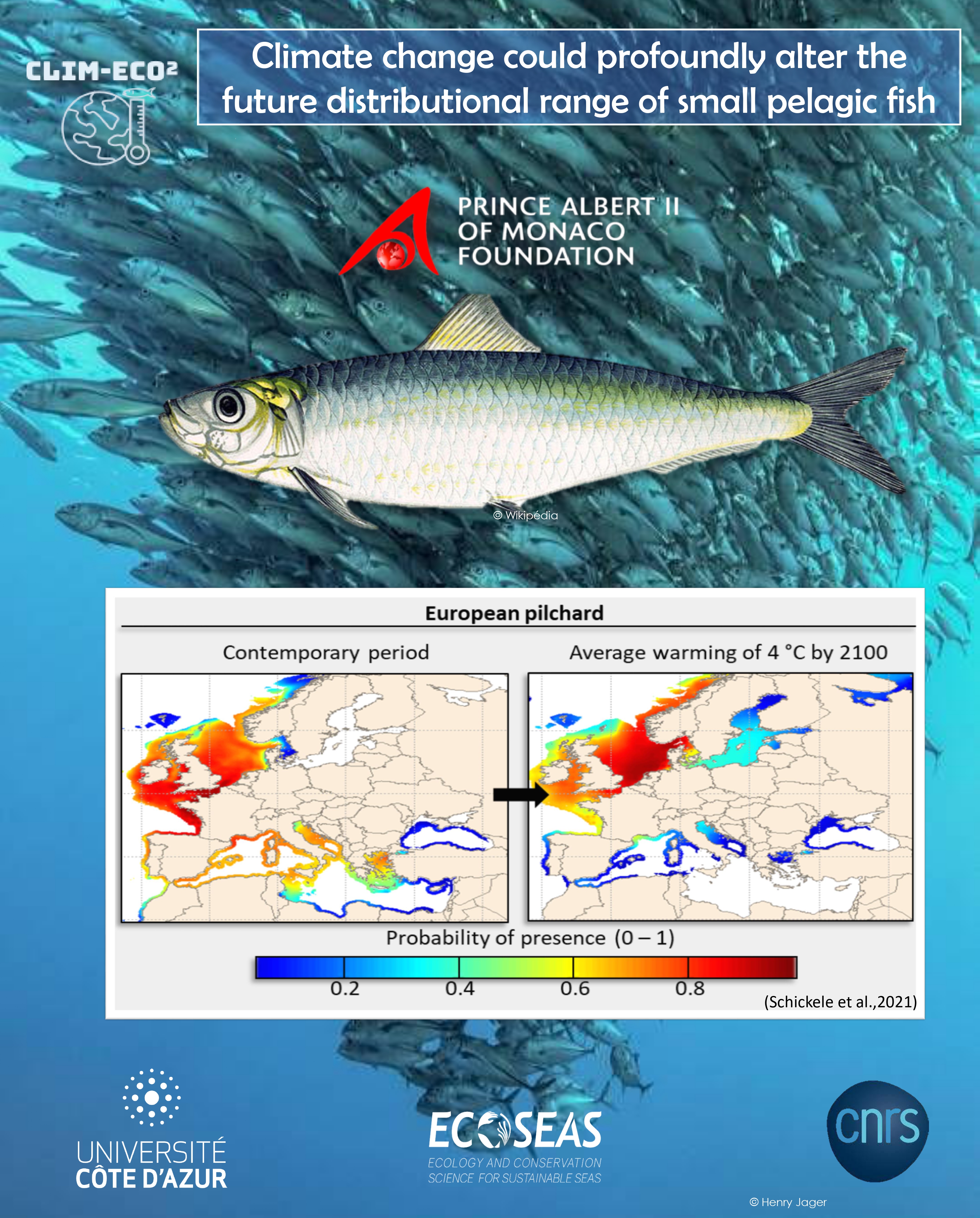Products
ATLAS OF CURRENT AND FUTURE SPACE DISTRIBUTION OF THE MAIN MARINE SPECIES EXPLOITED IN THE MEDITERRANEAN
As a part of the CLIM-ECO² project, a team of researchers from the University of Côte d´Azur and their collaborators investigated the impact of climate change on the distribution of marine species exploited in the Mediterranean. This study recalls the need to limit global warming to 2 ° C since the pre-industrial era in order to minimize its impact on the exploitation of marine resources and the economic activities that depend on them.
The species presented in this ATLAS can be divided into 4 groups:
- Mediterranean fish of major commercial interest, such as small pelagic fish, including anchovies and sardines, which represent nearly 50% of the tonnage caught in the Mediterranean.
- Mediterranean fish with high commercial value, such as anglerfish, european seabass or gilthead seabream. These are fish that represent a high market value according to the Food and Agriculture Organization of the United Nations (FAO, 2018).
- Mediterranean cephalopods, such as common octopus or common cuttlefish, which represent a significant part of the tonnage landed and are considered as future target species for our Mediterranean fisheries.
- Non-native species, mainly originating from the Red Sea via the Suez Canal, which are expected to expand significantly during the 21st century. The work presented in this ATLAS has notably projected a significant expansion of these species towards the North of Europe by 2100, while the significant warming expected in the Mediterranean could results in a local disappearance of these species in its southern basin.

















